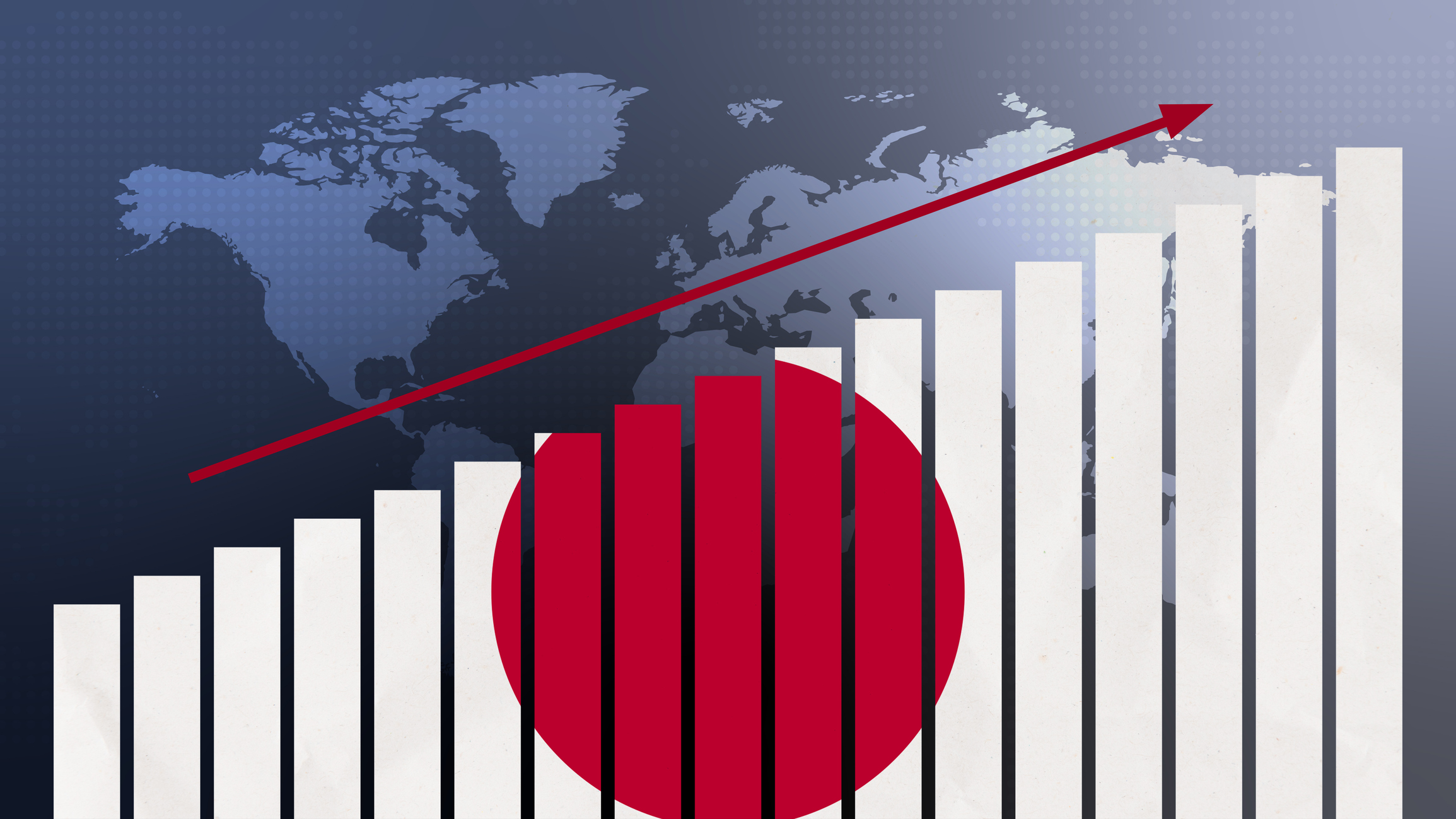Answers to Your Money Questions
Are you saving enough for retirement? Do you have enough life insurance? Should you lease your next car? Here are answers to some of your most common investing, planning, money management and spending quesitons.
Kiplinger's experts take on the major dilemmas of your financial life -- where to invest now, how much insurance is enough, how to prepare for retirement, the best way to save for college -- and wrestle them to the ground.
Investing FAQs appear below. Use the links in the box below to jump to more.
Investing
- I'd like to invest in stocks or mutual funds that will grow steadily until I retire, but I don't have a lot of money. Where should I start?
- Where can I research stocks and mutual funds online for free?
- Give me one fund to invest in -- no portfolios or index funds, please. And I don't like to take too much risk.
- How many mutual funds should I own?
- What's the world's worst mutual fund?
- Some stocks used to be described as suitable for widows and orphans. Are there any such stocks left?
- How do I pick a financial adviser?
- I just found some stock certificates. How can I find out if they are worth anything, and how do I sell them if they are?
I'd like to invest in stocks or mutual funds that will grow steadily until I retire, but I don't have a lot of money. Where should I start?

Sign up for Kiplinger’s Free E-Newsletters
Profit and prosper with the best of expert advice on investing, taxes, retirement, personal finance and more - straight to your e-mail.
Profit and prosper with the best of expert advice - straight to your e-mail.
Start with a no-frills discount broker, such as ShareBuilder, which has no investment minimum, no account minimum and no annual fee. It charges just $4 to buy a stock ($12 a month for unlimited purchases). You can even buy fractional shares, so it works well for investors who want to invest a fixed amount each month.
In addition to individual stocks, ShareBuilder lets you buy exchange-traded funds (ETFs) -- fixed baskets of stocks that track a particular index or industry sector, giving you the diversification of mutual funds without the high minimum investments.
To offer its rock-bottom rates, ShareBuilder bundles its buy orders and executes them just once a week, so frequent traders need not apply.
Where can I research stocks and mutual funds online for free?
Start with Kiplinger.com, which offers reams of statistical data. Try Yahoo! Finance for links to annual reports, quarterly statements and shareholder conferences with management.
To help put the statistics in context, Research Wizard, at MSN Moneycentral, lets you see how one stock stacks up against its peers based on different statistics. Use Research Wizard to compare funds, too.
Another great online tool is PriceWaterhouseCoopers's Edgarscan. Edgarscan quickly fillets quarterly and annual balance sheets, plus income and cash-flow statements. Its Benchmarking Assistant then displays that data in bar charts and can compare a company's results with its peers' performance over the past ten years.
The most comprehensive and least expensive subscription-based service is a premium membership at Morningstar.com. Recently priced at $109 a year (with a two-week free trial), it will give you access to all of Morningstar's analytical tools and commentary on stocks, funds and the overall market.
Give me one fund to invest in -- no portfolios or index funds, please. And I don't like to take too much risk.
No problem: Dodge & Cox Stock. We once called it "seriously old-fashioned and willfully unhip." Does that sound so bad these days? Come back with us to 1997, when we visited John Gunn, now president of Dodge & Cox, at the firm's offices in San Francisco. It was Meltdown Monday, and the Dow was cratering to its biggest one-day bust ever, to that date. What was doing at Dodge & Cox? Nothing. No shareholders called to redeem. The trading floor was deserted. It was just another day. What a comfort it seemed then, and still does.
Like you, Dodge & Cox Stock (symbol DODGX; 800-621-3979; www.dodgeandcox.com) avoids unnecessary risks. It invests only in large companies -- primarily those declining in price, because the more beaten-down a stock is, the less risk there is that it will fall even further. The fund seldom invests in a company that has been in business for less than a decade. Investment decisions are made by a ten-member committee.
Stodgy? Maybe, but that means investments aren't made impulsively. Turnover is low because D&C invests with a four-year horizon. And it is dirt cheap: There's no sales charge, and annual expenses are a rock-bottom 0.54% of assets.
Best of all, it makes money -- an annualized 13% in the past decade, which includes the worst bear market since the Great Depression. It ranks second among large-company funds for returns over the past 20 years, and the number-one fund isn't taking new investors.
What's not to like about Dodge & Cox Stock? Just this: When the next investment mania erupts, it will not be a player.
How many mutual funds should I own?
Ideally, your fund roster should have more players than a basketball team but no more than a baseball team. For your starting five, a diversified lineup would be funds representing these types of stocks: large, fast-growing companies; smaller fast-growing companies; large companies selling at bargain prices; smaller companies selling as bargains; and foreign companies.
To reduce risk, buy a money-market fund (it could double as your emergencies-only kitty) and a bond fund invested in intermediate-term corporate bonds or intermediate-term tax-exempt bonds.
You're set to go. But for even more diversification, add depth with utility players: a fund owning high-yield corporate, or "junk," bonds and another devoted to real estate investment trusts. For specific funds in model portfolios based on your goals, see Kiplinger's Portfolios.
What's the world's worst mutual fund?
That dubious distinction belongs to Frontier Equity, whose losses should make you feel better about your brokerage statement. It has hemorrhaged an annualized 62% per year over the past three years, reducing every $10,000 to $549. For this, it charges an 8% load and spends 32% of its assets on expenses.
Some stocks used to be described as suitable for widows and orphans. Are there any such stocks left?
Thousands of income-starved investors -- largely retirees, if not actually widows and orphans -- still pine for low-risk stocks with high and predictable dividends. A classic example is the old AT&T, which paid its shareholders exactly $1.50 per share each year from 1922 to 1958, and then raised its payout consistently until 1983, after which the company was forced to break up.
In recent years, however, companies have turned away from paying dividends. And with the deregulation of once-predictable industries such as utilities, old-style widows-and-orphans stocks have become extremely rare. Bonds aren't an ideal alternative: Although companies can raise stock dividends, a bond comes with a fixed-interest coupon.
However, if you're willing to bend the rules to include stocks that pay high and stable dividends but whose prices bounce around more than the old AT&T, you can turn up several dozen candidates, mostly banks, basic industries, oil and gas suppliers, and conservative utilities. Each of the following firms has an annualized total return of 7% or better over the past ten years and a dividend yield of at least 2%: Southern Co. (symbol SO), an electric utility; banks Wilmington Trust (WL) and National City (NCC); manufacturer Emerson Electric (EMR); and oil companies ExxonMobil (XOM) and ChevronTexaco (CVX).
How do I pick a financial adviser?
Start by soliciting names from your lawyer, accountant and friends. Then follow these steps:
Check references. An experienced adviser has relationships with lawyers, accountants and other professionals. Get their names from the adviser and confirm the relationship by phone.
Verify the status of designations and credentials. Certification from these organizations requires at least three years of experience:
- Certified Financial Planner (CFP): Awarded by the Certified Financial Planner Board of Standards after passing a ten-hour exam and meeting other requirements. Call 888-237-6275, or visit www.cfp.net.
- Chartered Financial Consultant (ChFC): Awarded by the insurance-oriented American College, in Bryn Mawr, Pa., after passing exams and other requirements. Contact the Society of Financial Service Professionals (888-243-2258; www.financialpro.org).
- Personal Financial Specialist (PFS): Awarded by the American Institute of Certified Public Accountants after passing an exam and other requirements. Contact the AICPA (888-999-9256; www.cpapfs.org).
Touch base with regulators. Firms that manage $25 million or more must register with the SEC and file Form ADV, which shows how the firm makes money, how planners are paid, and whether the firm or its employees have had legal problems.
Go to the SEC Web site to access the ADV forms filed by 7,800 SEC-registered advisers and 8,200 state-registered advisers who manage less than $25 million. If you don't have Internet access, ask the adviser for a copy of the most current filing.
Interview an adviser who belongs to NAPFA. Members of the National Association of Personal Financial Advisors (800-366-2732; www.napfa.org) are called fee-only planners; they charge a flat hourly rate, a set price for specific services, or a percentage of assets under management. Under no circumstances may members of the association collect sales commissions. NAPFA members must have a minimum of three years experience and specialized education. They must submit Form ADV to the association for review and pass a background check. In addition, each member must submit a comprehensive financial plan covering taxes, investing, and retirement and estate planning for peer review.
Trust yourself. The bottom line is that you are looking for someone you can talk to and whose advice you trust. No matter how qualified an adviser is, if you wouldn’t feel comfortable working with him or her simply because the "chemistry" between the two of you isn’t right, you should look elsewhere.
Once you’ve taken the steps outlined above, arrange for a face-to-face meeting with each finalist you’re considering.
I just found some stock certificates. How can I find out if they are worth anything, and how do I sell them if they are?
First, go to our Stock Research page and see if you can find any information about the company. Both the "Company Snapshot" and "Full Report" should contain a company address and phone number. Then contact the company's investor relations department to see if the certificate still has any value.
If you can't track down that company on our Web site, then do a Google search to see if the company has been sold, merged or gone out of business.
If you want some expert help with your search, contact Stock Search International or R.M. Smythe, which research old stock certificates and determine whether or not they have any value. Stock Search International charges $85; Smythe charges $75.
If your stocks are still traded, all you have to do is find a discount broker with offices in your area, make the sale and endorse the certificates by signing them on the back. A couple of words of warning, though. Brokers will probably charge you a small fee for buying back the certificates, so it could pay to shop around. Also, don't sign the certificates until you are in the office. The brokerage may have specific procedures for you to follow.
If, however, you discover that the certificates are worthless as stocks, they may still be valuable to stock-certificate collectors (called scripophilists). Smythe and Stock Search International may offer to buy your certificates. You can also find collectors, dealers and resources at the Washington Historical Autograph and Certificate Organization or Scripophily.com. Or you can offer the certificates for auction at eBay and hope to attract interested collectors.

Get Kiplinger Today newsletter — free
Profit and prosper with the best of Kiplinger's advice on investing, taxes, retirement, personal finance and much more. Delivered daily. Enter your email in the box and click Sign Me Up.
-
 The AI Doctor Coming to Read Your Test Results
The AI Doctor Coming to Read Your Test ResultsThe Kiplinger Letter There’s big opportunity for AI tools that analyze CAT scans, MRIs and other medical images. But there are also big challenges that human clinicians and tech companies will have to overcome.
By John Miley Published
-
 The Best Places for LGBTQ People to Retire Abroad
The Best Places for LGBTQ People to Retire AbroadLGBTQ people can safely retire abroad, but they must know a country’s laws and level of support — going beyond the usual retirement considerations.
By Drew Limsky Published
-
 What DOGE is Doing Now
What DOGE is Doing NowThe Kiplinger Letter As Musk's DOGE pursues its ambitious agenda, uncertainty and legal challenges are mounting — causing frustration for Trump.
By Matthew Housiaux Published
-
 A Move Away From Free Trade
A Move Away From Free TradeThe Letter President Trump says long-term gain will be worth short-term pain, but the pain could be significant this year.
By David Payne Published
-
 Trump’s Whirlwind Month of Crypto Moves
Trump’s Whirlwind Month of Crypto MovesThe Kiplinger Letter The Trump administration wants to strengthen U.S. leadership in the cryptocurrency industry by providing regulatory clarity.
By Rodrigo Sermeño Published
-
 What Could Derail the Economy This Year?
What Could Derail the Economy This Year?The Letter While the outlook for the U.S. economy is mostly favorable, there are plenty of risks that bear watching.
By David Payne Published
-
 Three Ways President Trump Could Impact the Economy
Three Ways President Trump Could Impact the EconomyThe Letter Some of Trump's top priorities could boost economic growth, but others risk fueling inflation.
By David Payne Published
-
 Europe Faces Economic and Political Headwinds Next Year
Europe Faces Economic and Political Headwinds Next YearThe Letter Challenges for Europe: Potential tariffs, high energy prices and more competition from China will weigh on the bloc in 2025.
By Rodrigo Sermeño Published
-
 Don't Sleep on Japan's Economic Transformation
Don't Sleep on Japan's Economic TransformationThe Letter After almost three lost decades, Japan — one of the world's biggest economies — is finally showing signs of life.
By Rodrigo Sermeño Published
-
 Start-ups Trying to (Profitably) Solve the World’s Hardest Problems
Start-ups Trying to (Profitably) Solve the World’s Hardest ProblemsThe Letter More investors are interested in companies working on breakthrough science to tackle huge societal challenges. The field of deep tech has major tailwinds, too.
By John Miley Published